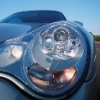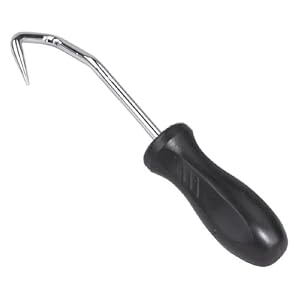Welcome to RennTech.org Community, Guest
There are many great features available to you once you register at RennTech.org
You are free to view posts here, but you must log in to reply to existing posts, or to start your own new topic. Like most online communities, there are costs involved to maintain a site like this - so we encourage our members to donate. All donations go to the costs operating and maintaining this site. We prefer that guests take part in our community and we offer a lot in return to those willing to join our corner of the Porsche world. This site is 99 percent member supported (less than 1 percent comes from advertising) - so please consider an annual donation to keep this site running.
Here are some of the features available - once you register at RennTech.org
- View Classified Ads
- DIY Tutorials
- Porsche TSB Listings (limited)
- VIN Decoder
- Special Offers
-
OBD II P-Codes - Paint Codes
- Registry
- Videos System
- View Reviews
- and get rid of this welcome message
It takes just a few minutes to register, and it's FREE
Contributing Members also get these additional benefits:
(you become a Contributing Member by donating money to the operation of this site)
- No ads - advertisements are removed
- Access the Contributors Only Forum
- Contributing Members Only Downloads
- Send attachments with PMs
- All image/file storage limits are substantially increased for all Contributing Members
- Option Codes Lookup
- VIN Option Lookups (limited)
-
Posts
2,804 -
Joined
-
Last visited
-
Days Won
10
Content Type
Profiles
Events
Forums
External Paint Colors
Downloads
Tutorials
Links Directory
Collections
Store
Posts posted by Ahsai
-
-
Looks like some folks faced the same problem and had to remove the cats but at least one managed to remove the sensors with a regular wrench without removing the cats. Check post #12 here http://forums.rennlist.com/rennforums/996-forum/514234-o2-sensor-removal.html
Will this tool help? http://www.tooltopia.com/calvan-tools-843.aspx?utm_source=pricegrabber&utm_medium=cse&utm_term=CAL843&utm_campaign=pricegrabber_r1
Hope JFP or someone else can chime in. Also don't forget to hit the sensor and any bolt you need to loosen with PB blaster or Kroil before removal.
-
Bentley manual says remove the sensors from the bottom of the car. Have you tried from the bottom?
-
No, Durametric only works on Porsche cars. For bimmers, you need something like Bavarian Technic scanner, which is the equivalent of Durametric but for bimmers. Do you use an Android phone?
-
Another possibility might be that a previous owner did a gauge face plate change and did not properly align and set the face plate and/or needle.
Yea, very possible messed up by the previous owner since they just don't fail like that by themselves.
In US, there are instrument cluster repair shops that would repair anything wrong on the instrument cluster for a few hundred dollars (flat rate). If you have some similar shops in UK, the most cost effective way is to remove the cluster by yourself (It's not difficult. There are plenty of instructions and photos if you google), then pack it well and send it to them for repair.
-
 1
1
-
-
Yes, the needle still stays pointing up when the engine's off.
That sounds like a mechanical problem of the gauge itself. The needle should have a hair spring that returns it to the "empty" position when there's no power applied to the cluster (when car is off). Photo here http://www.supraforums.com/forum/showthread.php?631436-My-gauge-cluster-setup&p=8232801&viewfull=1#post8232801
All the other gauges work the same way (needle at lowest end when key is OFF). Maybe the gauge overshot before for some reason and got stuck there? or the spring is broken. Maybe you can remove the cluster and try to gently feel move the needle a bit and see if it's sticking.
-
 1
1
-
-
Mine were weak already at 28k miles/5yr. Replaced under extended warranty. Felt like I got new rear suspension and shifting became better too. Vibration was much less with the new mounts like you said. I can only imagine the diff they make to higher mileage/older cars.
-
I do hope it's just the sensors (hence my suggestion of replacing them first) and i hope you don't take me wrong. I assume you saw a steady voltage on the post-cat briefly after cold start. That is normal because the postcat sensors are not heated up to their operating temperature yet during that time.
-
Sorry to say but from your readings, it does look like your cats are shot. Healthy O2 readings should be like those in post #4 (after 44:15 in post #4) and #5 here
http://www.renntech.org/forums/topic/37019-p0491-p0492-o2-problem/
Another thread here posts #1 and #5 here http://www.6speedonline.com/forums/996/163011-what-does-dead-catalytic-converter-looks-like.html
Since the cats are very expensive, I would still suggest installing your new precat and postcar sensors on bank 1 and do the log again. If you see no diff in your readings, it's very likely the cats are shot. However, if you see bank 1 reading back to normal, you can then install new sensors on bank 2 to fix it as well. Makes sense?
Now that I see you're tracking your car, it's not difficult to kill the cats due to more time spent on WOT, where the DME will go OPEN loop and give enriched mixture...
-
 1
1
-
-
I say gross negligence and should never go back to them even if they pay the tow. No good shops close to home?
I don't even want to imagine what else they messed up...not tightening the some bleeder valves, yike... By not verifying their work, they put your life in real danger. On hindsight, you should have never left their lot with obvious problem like that but now you know better.
Just find a good local shop and pay that 1hr labor to redo it and chalk it up to bad luck. Not worth the hassle to tow the car 150 miles there and wait for them to do the work again and you still need to second guess their work afterwards...
-
If they are leaking or stretched (your exhaust tips sit lower than normal), then they are shot. If original, I would bet they are very weak if not shot already. For DIY, I guess it's so simple that no one bothered to write a full one. Check here for instruction http://www.renntech.org/forums/topic/42353-to-remove-the-engine-mounts-i-remove-the-bottom-bolt-first-right/?hl=%2Bengine+%2Bmount#entry226237
-
Ever replaced your engine mounts and clean your throttle body? Vacuum leak can also cause rough idle.
-
Can you be more specific about the vibration? Happens only during cranking? Or you meant the engine has vibration when idling?
-
That was dangerous and not normal for sure. Sounds like you have air in your brake system. The brake pedal should feel normal after bleeding.
Please bring the car back to the dealership or a shop to fix it. It will not get any better. If you plan to DIY, check the instructions here http://www.renntech.org/forums/tutorials/article/54-brakeclutch-fluid-change-and-bleeding-instructions/
-
You can log the o2 sensor voltages on all 4 sensors (with durametric or even a generic obdii scanner) On both banks. After engine warm up, at idle, precat sensors should swing between 0.2-0.8v once a second. Post cat sensors should read about 0.7v almost steady. If you see the post cat reading kind of following the precat readings, your cats are shot.
Now repeat the above but drive the car around. The pre cat should swing about 10 times a second when the post cat will still be around 0.7v most of the time. If you accelerate, both pre and post cat reading will hit 1v almost instantly When you let off the gas quikly, both reading will go to 0 almost instantly.
-
The way I look at it is @100k, you've got your money worth of the original sensors anyway. I would just replace both sensors in bank 1, erase those codes, and keep monitoring. This will help further diagnosis by eliminating those sensors in bank 1.
If same cat code comes back on both sides, you can then look else where at something common upstream. If no more codes from bank 1, at least you've fixed that side.
-
Exactly my point. Would hate to see you doing the job twice :)
-
If your existing tank is original, it's 10yrs old already and can break/leak anytime now. Does it make more sense to replace it with a new one especially if you plan to remove your current tank from the car anyway? The '03 tanks are cheaper than the older models..
-
Glad to hear that you got your problem resolved w/o much effort :) Also good call to change the fuel filter due to age.
-
Try to check the oil pressure sender unit, which sits above that spot.
-
I can imagine that. An ancient design though and hence the high failure rate. However, I understand a solid state sensor will be $100 more so it's likely cost prohibitive.These can be repaired if the potentiometer wire has failed near the end. Strip off a few turns and re-solder. Then reseal the wires onto the board with varnish. I did a similar repair to a TR3A fuel gauge in 1969. H
-
Jason, couple more ideas:
1) I forgot when the immobilizer is actived, whether the car will still let the engine crank but not fire. Do you have another key to try?
2) any possibility of water in your fuel system. e.g., any rain recently when you fill up? Someone recently drained out like a pint of water from the fuel filter after he filled up the car and it died at the gas station. Somehow rain water got into the underground gas tank.
-
I think you need to verify both spark and fuel supply. You can pull one spark plug to check spark. You can also jump the fuel pump realy to verify the pump is working. I can think of at least two possibilities: fuel pump and crank sensor.
Agree with DC that can't think of anything related to your oil change and shifter mod.
-
If your error codes are because of CEL on (emission related), the OBDII scanners will be able to retrieve the code(s). They are $30-40 standalone (Actron) or if you use an Android phone, you can get a mini OBDII for $15 and get the "Torque" app for $5. I found them very good as a diagnostic tool because they work on all cars manufactured after 1996.
If your codes are from body modules, SRS, automatic transmission, etc., then no, Durametric is the cheapest tool that can read those.
-
+1 on what perryinva said. For the hoses, they feel like they're GLUED to the metal flanges. You need to break loose the surface between the hose and the metal. You can use a pick or something similar. Be careful not to mar the metal or cut into the hose with the pick though. Just insert the pick and try to go around the hose perimeter to break the surface, then just twist and pull, it should come off. I only disconnected three hoses for complete coolant drain and water pump and thermostat replacement. Each hose took me only a few minutes.
Today's tool-tip: Spend about $9 and get yourself a hose removal tool (this one is by OTC and sold by Amazon):

Slide it into the hose end, and a quick slide around the fitting circumference, the hose is loose and undamaged. Works on any rubber hose held on by a clamp.
Hey, that's exactly what I used! :)




P2096 Porsche fault code 16 - Oxygen sensor ageing Delay bank 1
in 996 Series (Carrera, Carrera 4, Carrera 4S, Targa)
Posted
What JFP said. Also, it's not strang because your front sensors are working correctly, there's no performance difference. The only diff is you are emitting less clean combusted gas.